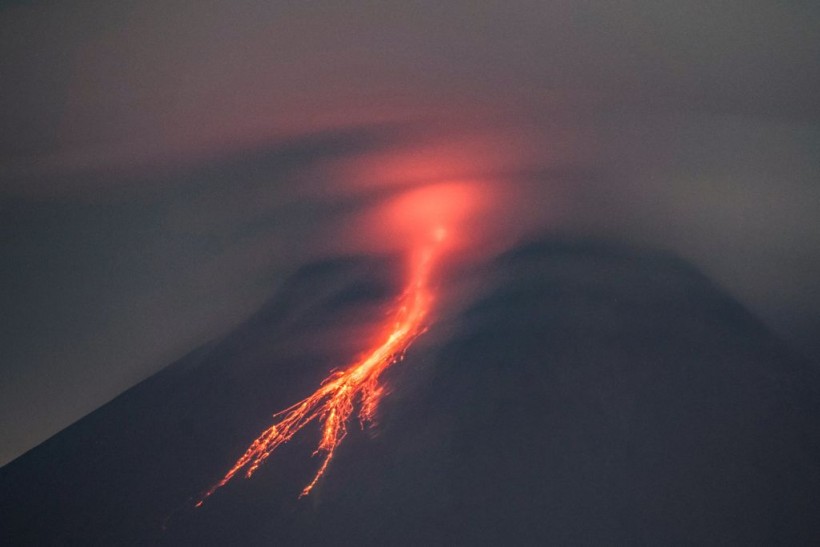
(Photo : AGUNG SUPRIYANTO/AFP via Getty Images)
TOPSHOT-INDONESIA-VOLCANO
TOPSHOT - Lava flows from Mount Merapi as seen from Yogyakarta on January 19, 2021.
The mass extinction during the Permian period was caused by foul-smelling toxic microbes emitting gas on a large scale that nearly made the earth amost dead.
This study suggests that the gas was catastrophically toxic to support life development before poisonous burb came.
It came to be called the End of Permian great dying out which was the most devastating event in the early Earth's history.
Bacteria stank the whole world to death!
Evidence from studies pin the blame on micro-organisms that were the engines of extinction due to the immense amount of toxic gas that overwhelmed in that era, reported Sci Tech Daily.
One conclusion is Siberian volcanoes releasing deadly greenhouse gas to a mass level killing event about 250 million years ago (Mya) at the end of the Permian era. These gases fouled the atmosphere which supported aquatic and land creatures, with 80% going extinct.
Before the microbe hypothesis, it was vague how increased temperatures killed on a global scale. But, a UC Riverside study in Nature Geoscience says the extreme heat caused changes to the microbes, noted Sciencedaily.
UC Riverside Earth system modeler Dominik Hülse said based on the scenario when all the oxygen was depleted in oceans for organic decomposition.
At this point, the microorganisms were emitting sulfate and made hydrogen sulfide that was akin to the stench of rotten eggs. It was toxic to oxygen-breathing creatures, cited Sci-News.
The march to extinction caused by rotten eggs
As the base of the food chain and also ocean photosynthesis; all the microorganisms and plant that was crucial to the food chain got impacted by foul-smelling toxic microbes. They rot and these microscopic creatures took all the oxygen killing bigger lifeforms in mass extinction.
Read also: Older Volcanoes That Erupt Less Often Produce More Dangerous Explosions, New Research Reveals
Without the usual oxygen, this less complex creature got the sulfate and emitted the stinky and toxic hydrogen sulfide (H2S) that led to euxinia. Surviving on the decomposing gases that made more of the organic muck and sludge kept the poisonous atmosphere for a while.
Hülse added that some parts of the ocean were not euxinic. These conditions would persist in the deeper depths. Rising heat would increase these poisoned zones, and go toward the surface that reached where aquatic animals stayed, killed them.
Researchers saw this toxic zone manifested in the chemical remnants that were seen in sediment samples.
Problems from the Permian epoch still exist
The existence of less oxygen produced by sources is still with modern man and is the silent danger that is a result of climatic change happening in this present epoch of earth's ongoing history.
There are still Euxinic waters in the 16-mile-long Dominguez Channel of LA county due to an accidental release of ethanol by a warehouse blaze in September 2021.
It wiped out plants in the channel that started the toxic production of killer gases, having hydrogen sulfide present in high amounts. This river stank like rotten eggs and caused all sorts of disquieting reactions like diarrhea and vomiting.
Conditions in the channel reflect what happened way back in earth's stages that were a great stink-off that killed about 80% of flora and fauna. It is happening in seas and waterways now.
Hülse reminded that these signs should not be discredited but caution is needed to avoid another mass extinction event.
The end of Permian was brought about by euxinic and foul-smelling toxic microbes that encompassed loss of flora and fauna killed by the foulest stench literally.
Related article: Ancient Oceans Not Susceptible to Climate Change; Human Activities Have Done Many Damages








